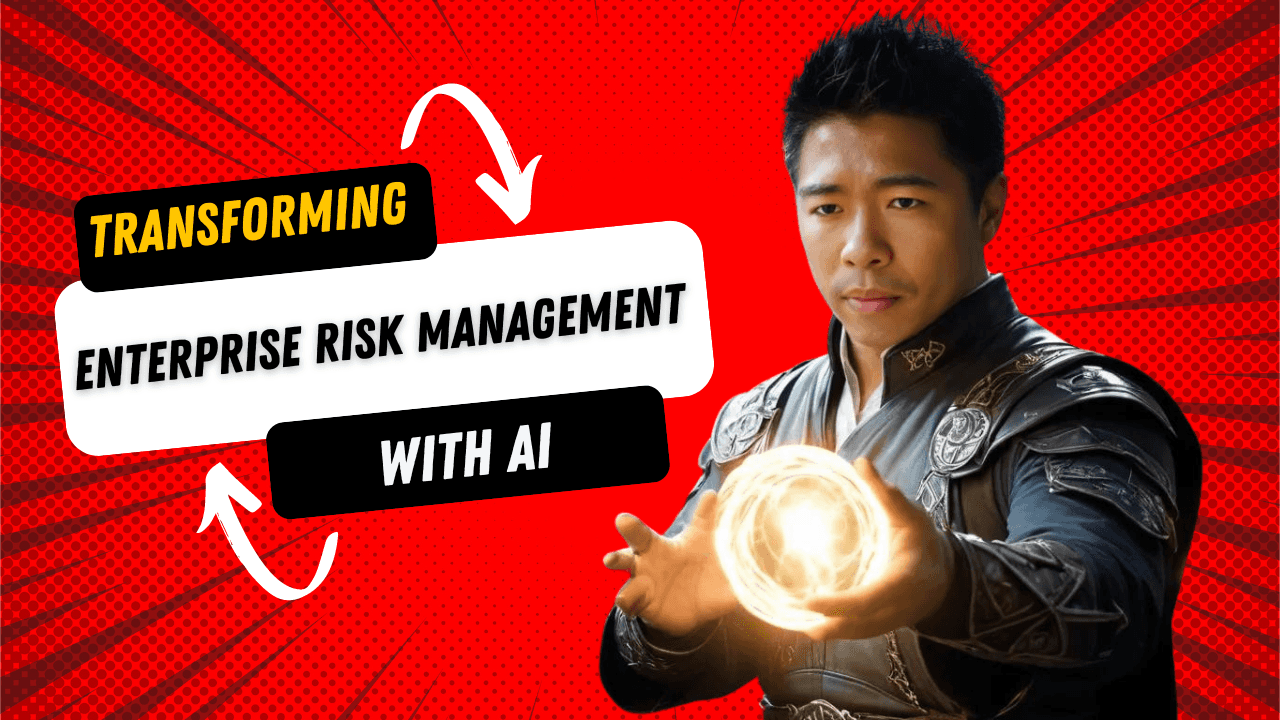Transforming Enterprise Risk Management with AI: Enhancing Risk Assessment and Decision-Making
Enterprise risk management (ERM) is critical for identifying, assessing, and mitigating risks that can impact an organization's operations and objectives. As risks become more complex and unpredictable, traditional risk management methods may fall short. Artificial Intelligence (AI) is emerging as a powerful tool to enhance ERM by predicting risks, providing deeper insights, and optimizing mitigation strategies. This article explores the role of AI in enterprise risk management and how it can transform risk assessment and decision-making processes.
Role of AI in Risk Management
AI's role in risk management is multifaceted. It helps in automating and improving the accuracy of risk identification, assessment, and mitigation processes.
AI algorithms can analyze vast amounts of data, identify patterns, and predict potential risks with greater precision. This not only enhances the effectiveness of risk management but also allows for more proactive and strategic decision-making.
By leveraging AI, organizations can better anticipate risks and respond swiftly, ensuring business continuity and resilience.
AI-Driven Risk Identification
Techniques for Detecting and Assessing Risks
AI-driven risk identification involves using advanced techniques to detect and assess risks more accurately. Key techniques include:
- Machine Learning (ML): ML algorithms can analyze historical data to identify patterns and predict potential risks. These algorithms learn and improve over time, enhancing their accuracy.
These techniques enable organizations to identify risks more comprehensively and at an early stage, allowing for timely intervention.
Predictive Analytics in Risk Management
Forecasting Potential Future Risks
Predictive analytics leverages AI to forecast potential future risks, enabling proactive risk management. Key applications include:
- Financial Risk Prediction: AI models can analyze market trends, economic indicators, and financial data to predict risks such as credit defaults, market volatility, and liquidity crises.
By forecasting risks, organizations can develop contingency plans and allocate resources more effectively, minimizing potential impacts.
AI for Decision Support Systems
Enhancing Decision-Making with AI-Powered Insights
AI enhances decision-making in risk management by providing data-driven insights and recommendations. Key benefits include:
- Real-Time Analysis: AI can process and analyze data in real-time, providing immediate insights that support quick decision-making.
These capabilities enable organizations to make more informed and strategic decisions, improving their overall risk management.
Integration with Existing Systems
Seamlessly Blending AI with Traditional Risk Management
Integrating AI with existing risk management systems can enhance their capabilities without disrupting current processes. Key integration strategies include:
- Data Integration: Ensure seamless integration of AI systems with existing data sources to provide comprehensive risk assessments.
A well-integrated AI system complements traditional risk management methods, providing a more robust and comprehensive approach to managing risks.
Case Studies: AI and Risk Mitigation
Examples from Finance and Manufacturing Industries
- Finance: A major financial institution implemented an AI-driven risk management system to predict credit defaults. By analyzing historical loan data, customer behavior, and economic indicators, the AI system provided early warnings of potential defaults. This allowed the institution to take preemptive measures such as adjusting credit limits and offering financial counseling, significantly reducing default rates.
- Manufacturing: A manufacturing company integrated AI into its operational risk management. The AI system analyzed data from production lines, supply chains, and equipment sensors to predict potential disruptions. By identifying risks such as equipment failures and supply chain delays early, the company could implement preventive maintenance and optimize inventory management, enhancing operational efficiency and reducing downtime.
These case studies highlight the transformative impact of AI on risk mitigation in different industries.
Challenges and Limitations
Addressing Potential Drawbacks and Limitations
While AI offers significant benefits for risk management, it also presents challenges and limitations:
- Data Quality: AI systems rely on high-quality data for accurate predictions. Incomplete or biased data can lead to incorrect assessments.
Addressing these challenges requires careful planning, continuous monitoring, and a commitment to ethical AI practices.
Future Directions in AI and Risk Management
Emerging Trends and Technologies
The future of AI in risk management is promising, with several emerging trends and technologies set to enhance its capabilities:
- AI-Driven Regulatory Compliance: AI systems will increasingly be used to ensure compliance with regulatory requirements, reducing the risk of legal penalties.
These trends will further integrate AI into enterprise risk management, enhancing its effectiveness and reliability.
FAQs
Common Queries About AI in Risk Management
- How does AI improve risk identification? AI improves risk identification by analyzing large datasets, detecting patterns, and identifying potential risks more accurately and quickly than traditional methods.
Conclusion
AI is revolutionizing enterprise risk management by enhancing risk identification, providing predictive insights, and supporting data-driven decision-making. While there are challenges and limitations to its adoption, the benefits of AI in improving risk management processes are significant. By integrating AI with traditional methods, organizations can develop a more comprehensive and proactive approach to managing risks. As AI technologies continue to evolve, their impact on enterprise risk management will only grow, driving better outcomes and ensuring business resilience.


